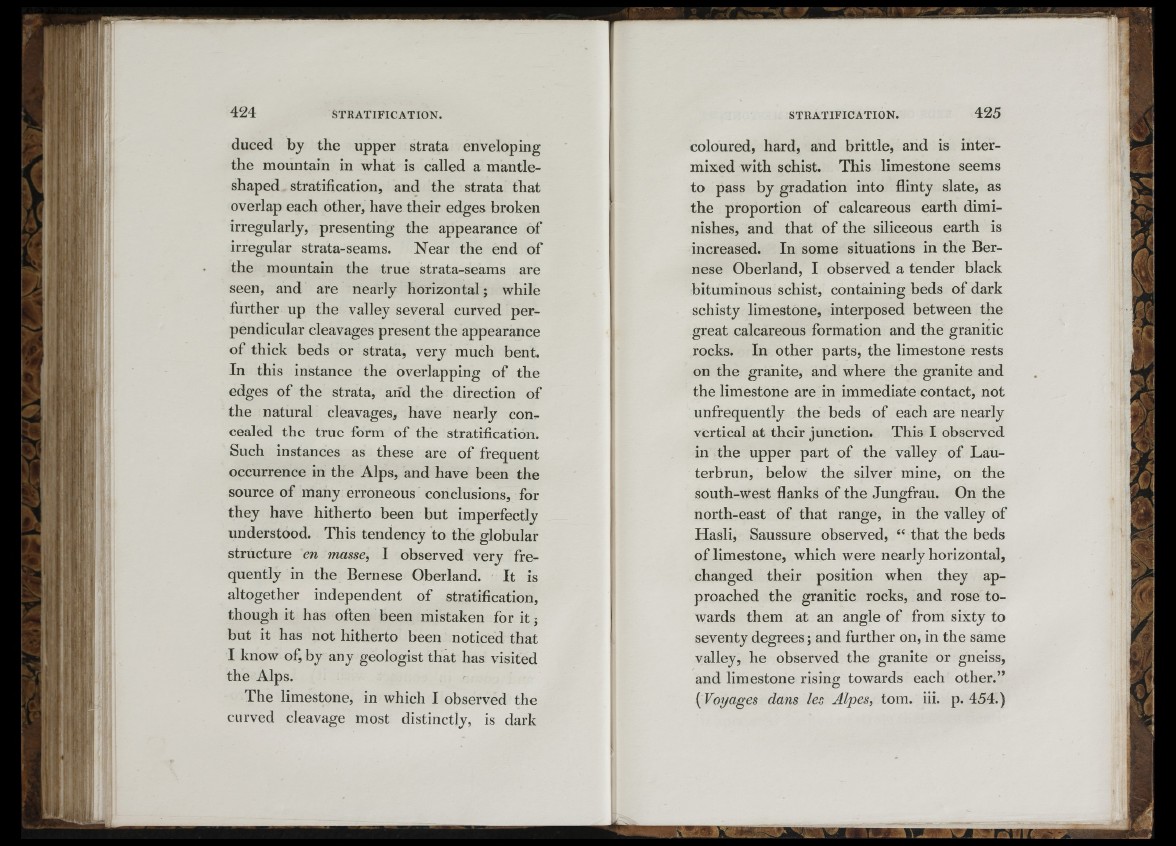
a-
'! It
duced by the upper strata enveloping
the mountain in what is called a mantleshaped
stratification, and the strata that
overlap each other, have their edges broken
irregularly, presenting the appearance of
irregular strata-seams. Near the end of
the mountain the true strata-seams are
seen, and are nearly horizontal; while
further up the valley several curved perpendicular
cleavages present the appearance
of thick beds or strata, very much bent.
In this instance the overlapping of the
edges of the strata, and the direction of
the natural cleavages, have nearly con.-
cealed the true form of the stratification.
Such instances as these are of frequent
occurrence in the Alps, and have been the
source of many erroneous conclusions, for
they have hitherto been but imperfectly
understood. This tendency to the globular
structure en masse, I observed very frequently
in the Bernese Oberland. It is
altogether independent o f stratification,
though it has often been mistaken for i t ;
but it has not hitherto been noticed that
I know of, by any geologist that has visited
the Alps.
The limestone, in which I observed the
curved cleavage most distinctly, is dark
coloured, hard, and brittle, and is intermixed
with schist. This limestone seems
to pass by gradation into flinty slate, as
the proportion o f calcareous earth diminishes,
and that o f the siliceous earth is
increased. In some situations in the Bernese
Oberland, I observed a tender black
bituminous schist, containing beds of dark
schisty limestone, interposed between the
great calcareous formation and the granitic
rocks. In other parts, the limestone rests
on the granite, and where the granite and
the limestone are in immediate contact, not
unfrequently the beds o f each are nearly
vertical at their junction. This I observed
in the upper part of the valley o f Lauterbrun,
below the silver mine, on the
south-west flanks of the Jungfrau. On the
north-east of that range, in the valley of
Hasli, Saussure observed, “ that the beds
of limestone, which were nearly horizontal,
changed their position when they approached
the granitic rocks, and rose towards
them at an angle of from sixty to
seventy degrees; and further on, in the same
valley, he observed the granite or gneiss,
and limestone rising towards each other.”
[Voyages dans les Alpes, tom. iii. p. 454.)